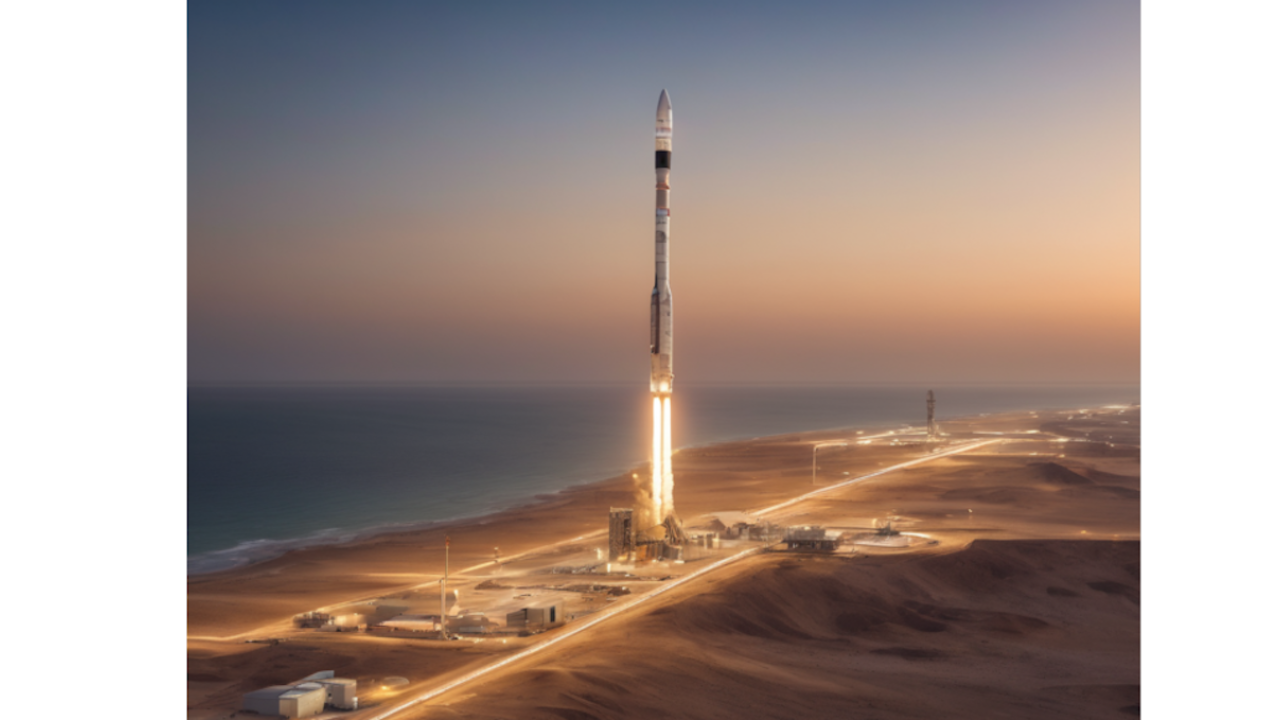Excitement grows over Mars data
The Emirates Mars Mission Hope probe has now been in space for nearly two years focusing on the atmosphere and climate of the Red Planet.

Peering through the gloom: Hope monitors a massive dust storm on Mars. Picture: Emirates Mars Mission/EXI.
Scientists are increasingly excited by the data they are receiving from the UAE’s Mars Hope spaceship.
The probe successfully entered orbit around Mars on February 9 2021, having been launched from Tanegashima, Japan, on July 19 2020.
The mission is exploring the atmospheric processes that drive daily variations, how energy is transferred from the lower-middle atmosphere to the upper atmosphere, and how lower atmosphere conditions are connected to the escape of atmospheric particles from the planet.
It is looking at the Martian atmosphere in visible, ultraviolet, and infrared wavelengths using its three separate imaging systems.
The spacecraft is now about half way through its primary mission.
Hessa Al Matroushi, science lead for the mission, told a virtual meeting of the Mars exploration programme analysis group, a NASA advisory board: “We’re very excited about the science that we’re getting from this mission.”
Hope’s primary mission is planned to last one Martian year (687 Earth days). Scientists want to understand how weather and climate work across the entire planet, both throughout a day and throughout a year.
Al Matroushi said that the team has been studying water cloud features that appear to grow at the beginning and end of the day and shrink in the middle.
The mission releases new data every three months, with the last batch posted in January 2022, Al Matroushi noted. There is also the possibility of the start of an extended mission beginning next year.
The probe has been beaming back stunning images of the planet that have revealed its geographical features and atmospheric conditions.
Scientists around the world have also been benefiting from the vast amount of data the mission has released so far, including images of the planet’s aurora and abundance of oxygen.
Mars’ aurorae are unlike the type we have on Earth, which are concentrated at the north and south magnetic poles. Known as a “discrete aurora” on the night-time side of the Red Planet, the phenomenon is caused by solar energy interacting with crustal formations that still bear traces of the planet’s long-gone magnetic field.
In January, the second set of data released focused on some of the planet’s key geographical features, such as Olympus Mons, the largest volcano in the solar system, and Valles Marineris, a canyon network that is 4,000km long and reaches depths of up to 7km.
Hope has also provided new data on how dust storms develop and evolve over time, using its camera and infrared spectrometer.
Scientists were able to watch one storm develop, spread out to 2,500 miles across, obscure features including mountains and craters, and then thin out to nothing in two weeks.
Having access to this type of data could one day help humans living on the Red Planet know whether it is safe to venture outside, or if they needed to cover solar panels.
The team has also produced a unique Mars Atlas, highlighting features and views of the Red Planet, along with seasonal changes that Hope has witnessed.
So far, more than 300Gb of Hope’s data has been released, which is being made freely available to scientists around the world.
Hope’s early results were revealed at the 53rd Lunar and Planetary Science Conference, a hybrid (in-person/remote) event held near Houston, Texas, USA, from March 7-11 this year.
The Emirates News Agency (WAM) has also produced a 12-minute documentary entitled The Story of Hope to mark the first anniversary of the successful orbital launch of the probe around Mars.
The UAE’s next major space mission, which will be launched in 2028, will involve a fly-by of Venus, as well as a tour of seven different asteroids, ending with a landing on the last of them. If the mission is successful, this will make the UAE just the fourth country in the world to achieve such a feat.
Stay up to date
Subscribe to the free Times Aerospace newsletter and receive the latest content every week. We'll never share your email address.


